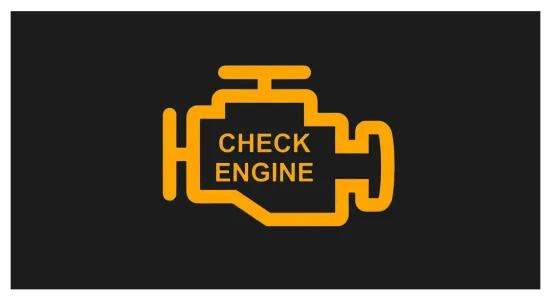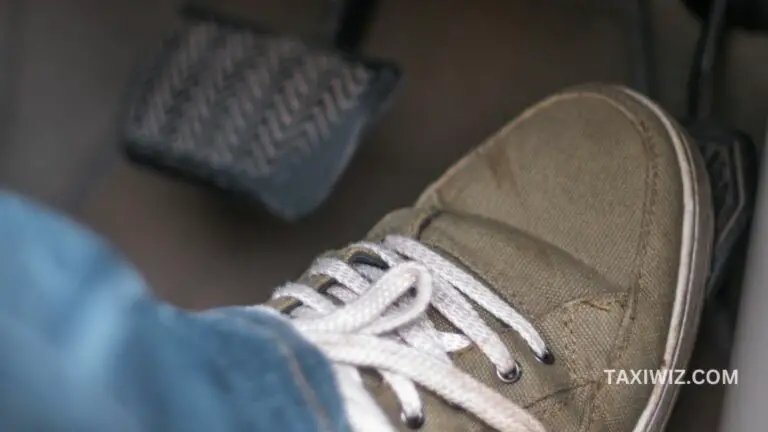Why Do My Headlight Keeps Burning Out – How To Fix?
Since headlights are responsible for moving you on the way in dark settings or bad weather, you cannot drive the vehicle if its headlights are out of order. But sometimes, the headlight keeps burning out on your vehicle, which can cause frustration.
But why do headlights keep burning out? Problems in the electric circuits of the vehicle, like malfunctioning voltage regulators or faulty wiring, can lead to frequent headlight failure. Besides that, mechanical issues like a loose bulb and socket connection, humidity, and moisture can also be the culprits.
Since headlights are an expensive vehicle part, frequent failure can be heavy on your pocket. Moreover, it is also risky to drive if the headlights fail midway. So it is essential to address this issue. This article will tell you all the ins and outs of headlight burnout. So let’s get to it.
Headlight Keeps Burning Out – 8 Common Causes To Check
Identifying the reason behind headlight burnout is essential since you can prevent future occurrences effectively. Here are some of the causes of headlights burnout.
1. Voltage Spikes
If your vehicle encounters frequent voltage fluctuations, it can lead to headlight burnouts. Voltage surge is a standard vehicle issue and can occur for different reasons.
For instance, if your vehicle has a malfunctioning alternator or voltage regulator, it will burden the headlight bulbs, quickly causing them to burn out.
The Fix
In case of frequent headlight burnout, use a multimeter to check the alternator’s output voltage. If you see that the alternator shows more than the recommended voltage, you need to replace it.
Here is how to do it:
The most common voltage limit for alternators is 13.9 and 14.8 volts. To replace the alternator, seek professional help.
2. Wiring Problems
If your vehicle has any problem with the wiring, it can contribute to headlight burnouts. Some of the most common wiring problems are:
- Loose battery connections
- Frayed wires
- Corroded terminals
- Damaged component of the headlight circuit
With wiring problems, the headlight bulb will have a limited power supply, causing it to flicker or burn out.
The Fix:
You should check if your car battery terminals are corroded or clean. Moreover, it would be best to tighten the loose connections after cleaning them thoroughly. Besides, you should also check your battery health, as a weak or dying battery can also make for an intermittent voltage supply.
After ensuring that the battery is working fine, you should check if all the fuses and relays of the headlight circuit are OK. Why? Because a blown fuse or a defective relay can take a toll on your headlights. Replace all the damaged components if you find any.
3. Loose Headlight Bulb connections
If you frequently travel on rough terrains, then chances are your headlight bulb connection gets loose in the socket.
Moreover, aggressive driving can also cause the filaments in headlight bulbs to weaken and break. And with this poor connection, the headlight does not get enough power and causes burnout.
The Fix
To address this, you need to check that all connections related to the headlight system are secure.
You must check whether the wiring harness, sockets, and bulb connections are good. If you find any loose connections, tighten them for consistent power delivery.
Read Also: Headlights Flashing When Car Is Off – Why & How To Fix?
4. Moisture and Condensation
You might be familiar that the headlight housing is resistant to air and moisture entry inside it.
However, things get messed up when there are cracks, gaps, or entry points for moisture. When the moisture winter inside the headlight housing, it will cause:
- Bulb connection corrosion
- Short circuits
- Damage to the filament of the bulb
Not only that but moisture can also lead to temperature changes which can cause condensation in the headlights. Result? With this sudden temperature change, the bulb can burst out.
The Fix
You must thoroughly check the headlight housing for cracks, moisture entry points, or damage. Since cracks allow moisture to leach inside, you must replace any damaged or compromised headlight housings, leading to bulb failure.
5. Overheating
The filament inside the headlight bulb does emit heat to glow. But if your headlight bulb gets hotter often, it will take a toll on its lifespan.
For instance, if you mainly drive at night, you might be running the headlights for a reasonable amount of time. Result? It will lead to overheating the filament leading to filament failure.
And this situation gets worse when you drive in cold temperatures. The cold weather also affects the bulb lifespan as the filament gets fragile and breaks easily with a bit of vibration from the road.
The Fix
To overcome the heating issue, you must analyze and adjust your driving habits accordingly. Ensure proper airflow around the headlights and fix any cooling system issues causing excessive heat accumulation.
Read Also: Tail Lights Stay On When Car Is Off – Common Causes & Solutions
6. Bad Quality Bulb
You might be familiar that halogen bulbs do not have much lifespan. In fact, on average, the halogen bulb lasts only 500 to 1,000 hours, and this number can be lower for the lousy quality bulbs.
Now comparing halogen bulbs to other options like LED, HID (High-Intensity Discharge) bulbs, or Xenon HID can last a lifetime as they can operate as high as 50,000 hours.
If your headlight burns out frequently, you might have a bad-quality bulb.
The Fix:
You can opt for other alternatives to halogen bulbs like LED or HID. But there is a debate that HID bulbs bother old drivers, so for that, you can choose LED bulbs.
These bulbs are energy efficient and also last a long time. But remember, if you want to install the LEDs, you must seek professional guidance. Moreover, you can consult a professional to assess the culprit behind your headlight burnout better.
7. Touching the Bulb
Halogen bulbs are susceptible to bursting out upon slight contact with moisture. Because they work on even heat expansion around the bulb surface, and with a slight change in temperature around the bulb surface, they burst out.
So chances are, if you install a new halogen bulb and your skin comes in contact with it, it will leave sweat or body oils on its surface. So when you turn on the headlights after installing, it will lead to headlight burnout.
The Fix:
Whenever you plan to install a bulb, you should wear sterile gloves. Moreover, you should also refrain from touching the bulb glass with bare hands and handle it from the bottom part. Also, to be safe, you should clean the bulb after installation so that any moisture can be removed.
8. Turning On Headlights Before Starting the Car
Most novice and sometimes experienced drivers make the mistake of turning on headlights before revving the engine. Now why does it affect the headlight lifespan?
If you start your vehicle (by a key or push button), it will draw power from multiple vehicle parts to start the engine. Now if your headlights are on before the vehicle starts, the lights will turn off momentarily (to fulfill the vehicle power demand upon starting) before turning up again. So if you frequently do this, it will take a toll on the headlight bulb’s life.
The Fix:
Alaway starts the vehicle first and turns on the lights after starting it.
Prevention and Maintenance guide
While finding and addressing the root causes can help with frequent headlight burnout, regular maintenance and prevention tips can also maximize its lifespan. Here are some prevention and maintenance tips:
Upgrading to better-quality headlights
As mentioned earlier, poor quality bulbs need frequent change, while investing in a good quality bulb will cut your replacement cost. So consider upgrading vehicle headlights to LED or HID (High-Intensity Discharge) bulbs. These bulbs can also withstand vibrations and provide better radiance while consuming less power.
Use voltage stabilizers or surge protectors
If you install voltage stabilizers or surge protectors in your vehicle, you can overcome the electrical voltage spike issue. They protect against sudden voltage spikes and guarantee a steady power flow to your headlights.
Regular maintenance checks
Regular maintenance entails a few steps, which are:
- Regular headlight cleanup is important to remove dirt, grime, and debris that can reduce their brightness and deter visibility. You can use a mild detergent, water, and a soft cloth to clean the headlight lenses gently. But make sure to dry out the lights properly after cleaning them.
- Regularly check the electrical connections to the headlight system. Remove the damaged parts and tighten the loose connection, if any.
- Replacing worn-out wires or sockets is also necessary for the long life of headlights. Replace any worn-out parts promptly to maintain the integrity and functionality of your headlight system.
When to Seek Professional Help?

Consult a professional mechanic if you encounter consistent headlight burnout despite troubleshooting efforts. You should seek their assistance if:
- You cannot identify the specific cause of the headlight burnouts despite thorough checking.
- You don’t have the tools, knowledge, or experience to perform complex repairs or replacements.
- Your vehicle has headlights with advanced electronic features that require specialized diagnosis and repair.
Conclusion
There can be many contributing factors for recurrent headlight burnouts, such as voltage spikes and wiring problems, loose connections and overheating, vibration, moisture, etc.
To promote improved visibility and safety, you should take early action to address headlamp burnout issues. It would also be helpful if you adopted safe driving practices. These practices include adapting your driving technique to the state of the road and being aware of any potential environmental elements that might affect your headlights.
You may have a safer and more dependable driving experience by prioritizing routine maintenance and calling for expert help when necessary.


![Car Water Pump Bearing Noise [9 Fixes Explained]](https://taxiwiz.com/wp-content/uploads/2023/08/Water-Pump-Bearing-Noise-768x426.jpg)
